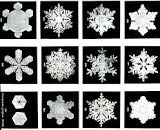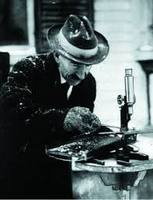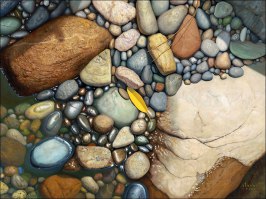

How does observing nature inspire art?
Why do artists value originality?
Frozen: Snowflakes
Develop Perceptual Skills and Visual Arts Vocabulary
- 1.1 Describe and replicate repeated patterns in nature, in the environment, and in works of art.
Analyze Art Elements and Principles of Design
- 1.3 Identify the elements of art in objects in nature, in the environment, and in works of art, emphasizing line, color,
shape/form, and texture.
Make Informed Judgments
- 4.3 Describe how and why they made a selected work of art, focusing on the media and technique.
- 4.4 Select something they like about their work of art and something they would change.
come
I invite you
study me
I want you
embrace the wonder of
I will show you
the snowflake of my soul
Snowflakes
by Linda A. Copp
Lovely and chaste like smooth white sand.
A veil of wonder laced in light
Falling Gently on a winters night.
Giving magic to the lifeless ground.
Each snowflake like a falling star
Smiling beauty that's spun afar.
Unspoken poem the hush of night.
How do snowflakes form?
The science behind snow
High resolution (Credit: NOAA)
Q: How are snowflakes
formed?
A: A snowflake begins to form when an extremely cold water droplet freezes onto a pollen or dust particle in the sky. This creates an ice crystal. As the ice crystal falls
to the ground, water vapor freezes onto the primary crystal, building new crystals – the six arms of the snowflake.
That’s the short answer.
The more complex explanation is this:
These ice crystals that make up snowflakes are symmetrical (or patterned) because they reflect the internal order of the crystal’s water molecules as they arrange themselves in predetermined spaces
(known as “crystallization”) to form a six-sided snowflake.
Ultimately, it is the temperature at which a crystal forms — and to a lesser extent the humidity of the air — that determines the basic shape of the ice crystal. Thus, we see long needle-like
crystals at 23 degrees F and very flat plate-like crystals at 5 degrees F.
The intricate shape of a single arm of the snowflake is determined by the atmospheric conditions experienced by entire ice crystal as it falls. A crystal might begin to grow arms in
one manner, and then minutes or even seconds later, slight changes in the surrounding temperature or humidity causes the crystal to grow in another way. Although the six-sided shape is always
maintained, the ice crystal (and its six arms) may branch off in new directions. Because each arm experiences the same atmospheric conditions, the arms look identical.
Q: So, why are no two snowflakes exactly alike?
A: Well, that’s because individual snowflakes all follow slightly different paths from the sky to the ground —and thus encounter slightly different atmospheric
conditions along the way. Therefore, they all tend to look unique, resembling everything from prisms and needles to the familiar lacy pattern.
Artful Teaching
Mrs. Schellenberg & Young Artists
Ralph Waldo Emerson's Poem: Success- to leave the world a bit better, whether by a healthy child, a garden patch or a redeemed social condition; To know even one life breathed easier because of you.
Thank you AT&T
We used the wiring for our artful galimotos










